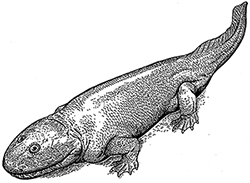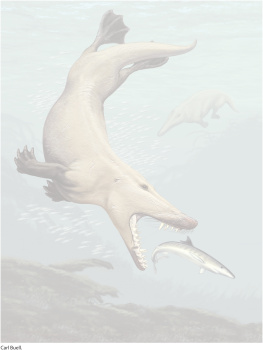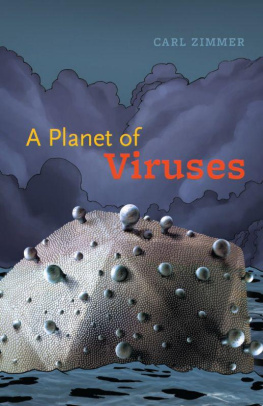Thank you for downloading this Atria Books eBook.
Join our mailing list and get updates on new releases, deals, bonus content and other great books from Atria Books and Simon & Schuster.
C LICK H ERE T O S IGN U P
or visit us online to sign up at
eBookNews.SimonandSchuster.com
We hope you enjoyed reading this Atria Books eBook.
Join our mailing list and get updates on new releases, deals, bonus content and other great books from Atria Books and Simon & Schuster.
C LICK H ERE T O S IGN U P
or visit us online to sign up at
eBookNews.SimonandSchuster.com
Praise for At the Waters Edge
A fascinating story, which Zimmer unfolds as a tale of high-stakes scientific sleuthing... thanks to marvelously lucid writing. Booklist
More than just an informative book about macroevolution itself, this is an entertaining history of ideas written with literary flair and technical rigor. Publishers Weekly
Zimmer is a born storyteller and succeeds in giving us pure pleasure while at the same time teaching us up-to-date science.Ernst Mayr, Museum of Comparative Zoology, Harvard University
Zimmer, an honored science journalist... leaves life among the fossils agreeably bright. The Atlantic Monthly
Anyone with an interest in evolution should pick up this book to get on the cutting edge of discovery.Kevin Padian, Professor and Curator, Department of Integrative Biology and Museum of Paleontology, University of California, Berkeley
From the first page Carl sets his book apart by diving straight into the most neglected, least understood mystery of all: how wholly new body plans and parts could have been created by natural forces that at first glance would seem to work to destroy innovation. Macroevolution is adaptation without a net. Carls lucid, often lovely prose is making me finally understand how a species could pull it off without plunging into extinction. He is also very deft at crafting quick-beat narrative out of the lives, inspirations, foibles and occasional dastardliness of the scientists who have pursued this question, both historically and in modern times. I fully expect that At the Waters Edge will do for macroevolution what Jon Weiners The Beak of the Finch did for microevolution or David Quammens The Song of the Dodo did for extinction. Im sure the book is going to really soar.James Shreeve, author of The Neandertal Enigma
Zimmer is an accomplished popularizer of scientific subjects. This book provides a strong basis for the public understanding of evolutionary patterns and processesRobert L. Carroll, McGill University, author of Vertebrate Paleontology and Evolution
This most compelling of evolutionary episodes is told with grace and style. Zimmers book is a rock hammer blow to those who doubt that evolution is an understandable law of nature.Peter Ward, University of Washington, author of The End of Evolution
It is wicked, I know, but I have the habit of turning over the corners of pages whenever I chance upon something unexpectedly interesting, exciting or informative. Zimmers At the Waters Edge quickly became the most dog-eared book on my shelves.Harry Miller, The Times (London)
Zimmer... presents an excellent discussion of macroevolution. Library Journal
The story Zimmer tells is a fascinating one, and not only because it is so skillfully written and so readably presented. Audubon magazine
Zimmer has done a great job, bringing to life two of the great events in the history of life.Mark Ridley, Oxford University, author of Evolution
With lively style, fascinating portraits of biologists at work, and splendid command of the evidence, Zimmer tells some of the most gripping stories in the history of life. I recommend it heartily.Douglas J. Futuyma, State University of New York at Stony Brook
Richard Dawkins and Stephen Jay Gould, move aside. Carl Zimmer brings evolutionary biology to life more vividly than any author in recent memory. This is a marvelous book by one of our best young science writers. Carl Zimmer has persuaded me that evolutionary biology remains a vital, even thrilling field.John Horgan, author of The End of Science

Rockefeller Center
1230 Avenue of the Americas
New York, NY 10020
www.SimonandSchuster.com
Copyright 1998 by Carl Zimmer
All rights reserved, including the right of reproduction in whole or in part in any form.
First Atria Books Edition 1999
ATRIA BOOKS and colophon are registered trademarks of Simon & Schuster, Inc.
Designed by Pei Koay
Library of Congress Cataloging-in-Publication Data
Zimmer, Carl.
At the waters edge: fish with fingers, whales with legs, and how life came ashore but then went back to sea/Carl Zimmer.
p. cm.
Includes bibliographical references and index.
1.Macroevolution.I.Title.
QH371.5.Z551998
576.8dc21
97-29331
CIP
ISBN0-684-83490-1
ISBN 0-684-85623-9 (Pbk)
ISBN 978-1-4767-9974-2 (eBook)
To my family
Taken by leaping madness or by fear
The men jumped to the sea. First Medons body
Changed color to darkest blue and hunched its back;
Lycabas turned to say, What monster are you?
And as he spoke, his nose became a hook,
His mouth grew wide, skin tough, and scales
Ran down his sides, and Libys while he struggled
With leaf-grown oars saw his hands diminish
From claws to fins; another clinging fast
To twisted ropes fell backwards to the sea,
Arms gone and legless, his tail crookd and pointed
As a third-quarter moon. The creatures lashed
At the ships side, plunging through spray, now up,
Now down to the seas floor, swaying like dancers
At a drunken feast, their bodies flashing,
Lips and nostrils pouring spray, they clipped and spawned.
O VID , T HE M ETAMORPHOSES (TRANS. H ORACE G REGORY)
Our ancestor was an animal which breathed water, had a swim bladder, a great swimming tail, an imperfect skull, and undoubtedly was an hermaphrodite! Here is a pleasant genealogy for mankind.
C HARLES D ARWIN, LETTER TO T HOMAS H UXLEY
CONTENTS

Introduction
LIFES WARPS
N ear my left side a yellowtail snapper hovered, breathing water, stammering its fins gently, and flicking its sulfur-striped tail. I was kneeling in the sand at the bottom of the ocean, water piled fifty feet overhead. All I could hear was the static when I sucked air from my scuba regulator and the swarm of my exhaled bubbles as they rose in a confetti column. A long gray shape moved overhead, wheeling and bending, and it took me a moment to recognize it as an Atlantic bottlenose dolphin. The yellowtail snapper and I watched it swim, raising and drawing down its tail a few times, and then gliding, moving like an iron ingot pulled invisibly by a magnetic field. Then suddenly it swept upward, kicking a bit to rise to the wrinkled ceiling of the ocean. When it leaped out of the water its head vanished and then its fins and flukes. For a moment it didnt exist, and then it was drilling down through the water again.
I had come to this place off the coast of Grand Bahama Island to watch how scientists study dolphins. A group of zoologists had piggybacked their research on the dives of a tourist outfit that offered its customers the chance to be entertained by trained dolphins. The customers were ferried out a mile from shore, dove underwater, and formed a circle around two trainers, who carried white drums of dead herring slung on their shouldersthe smell of which had brought the yellowtails here. At the command of the trainers, the dolphins delivered hoops to the customers, pushed against their outstretched arms to wheel them around like turnstiles. The scientists, who wanted to understand how dolphins swim, filmed the animals, and from time to time the trainers would measure the heat flowing from their bodies by pressing a sensor to their flanks. I could sense intelligence, even personality in the dolphins, but their gray masks, their rigid smiles wouldnt reveal how much they enjoyed the process. They seemed to know the rules of this game. If they played along, they got fish; if they decided to break away and explore the water for a while, it was no great loss.
Next page














